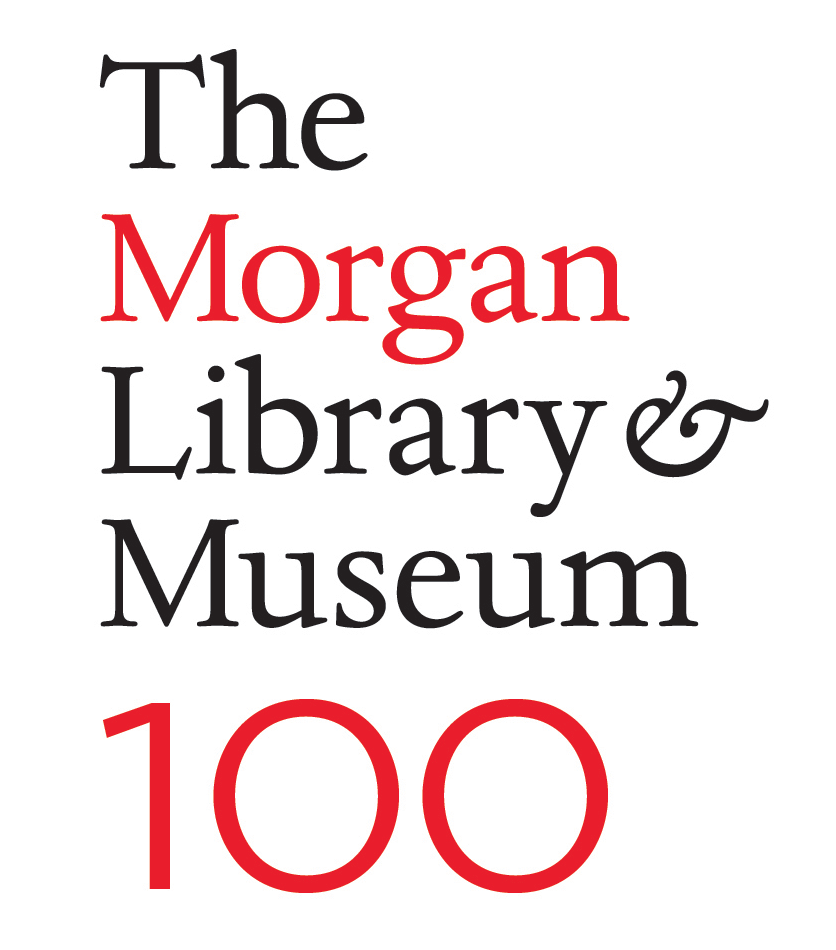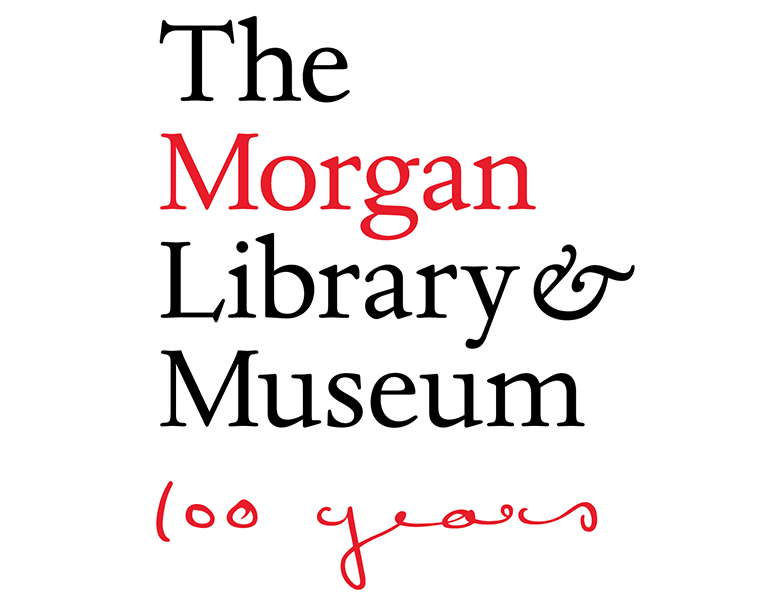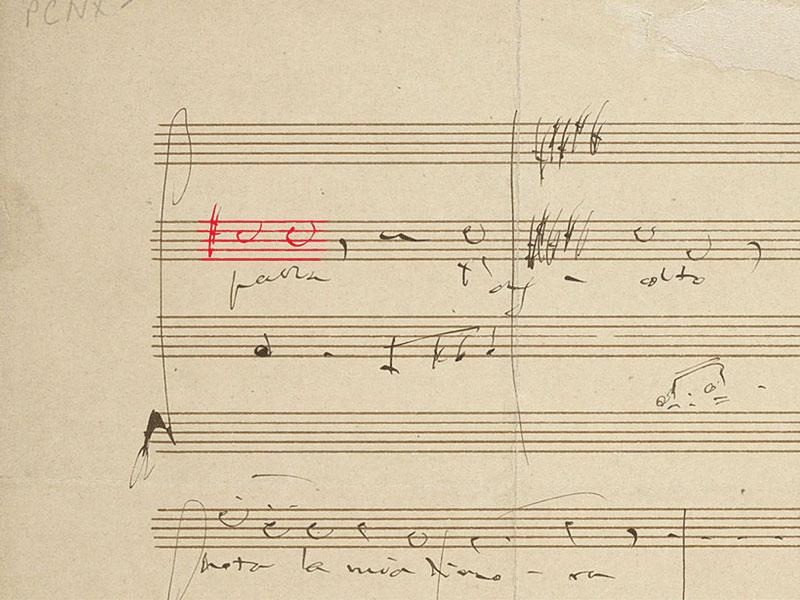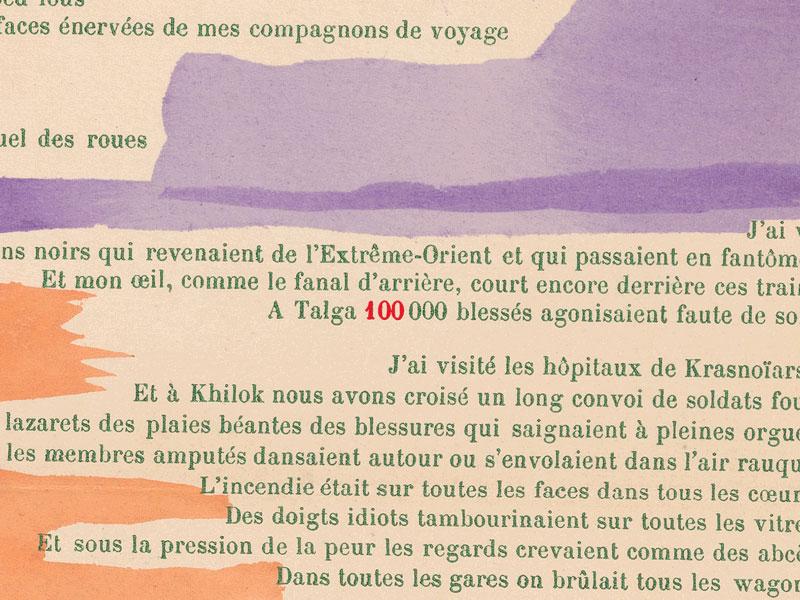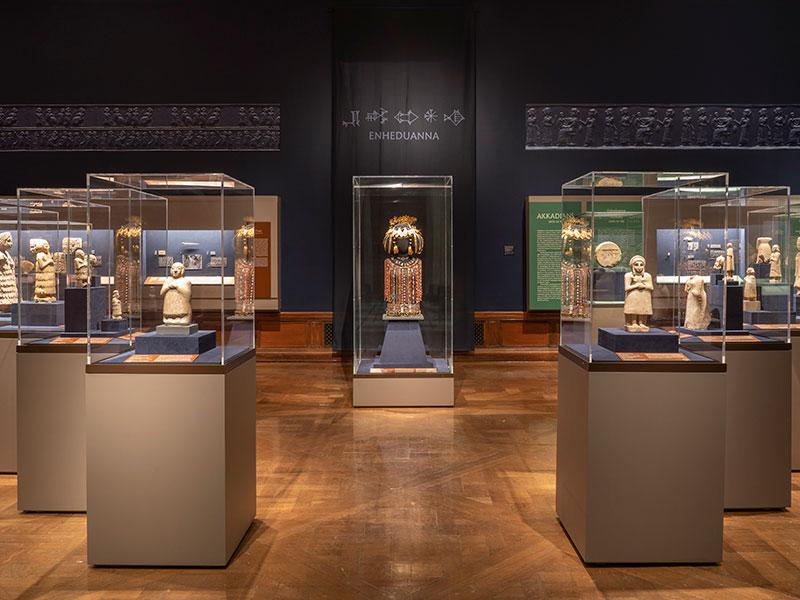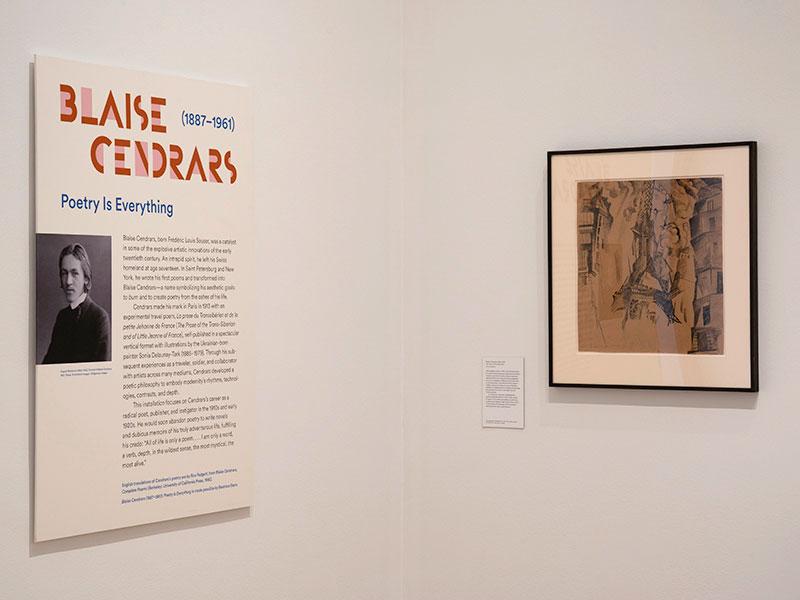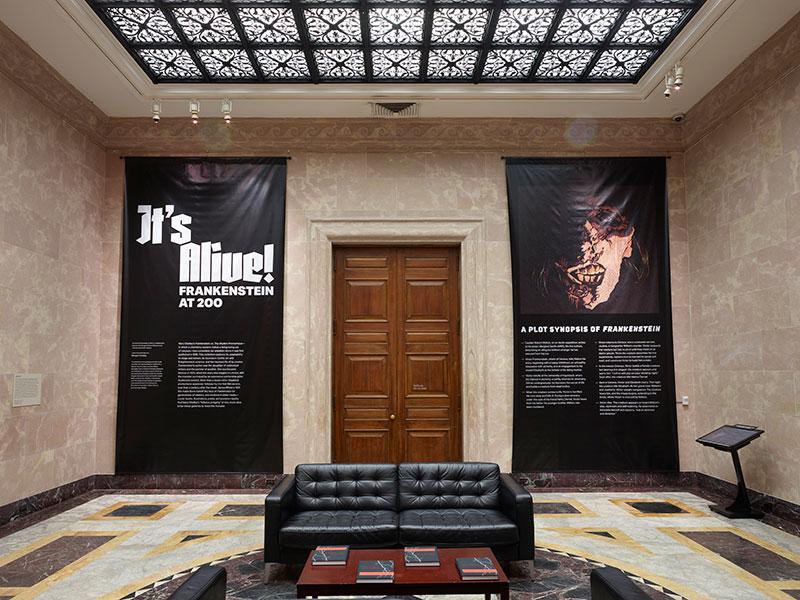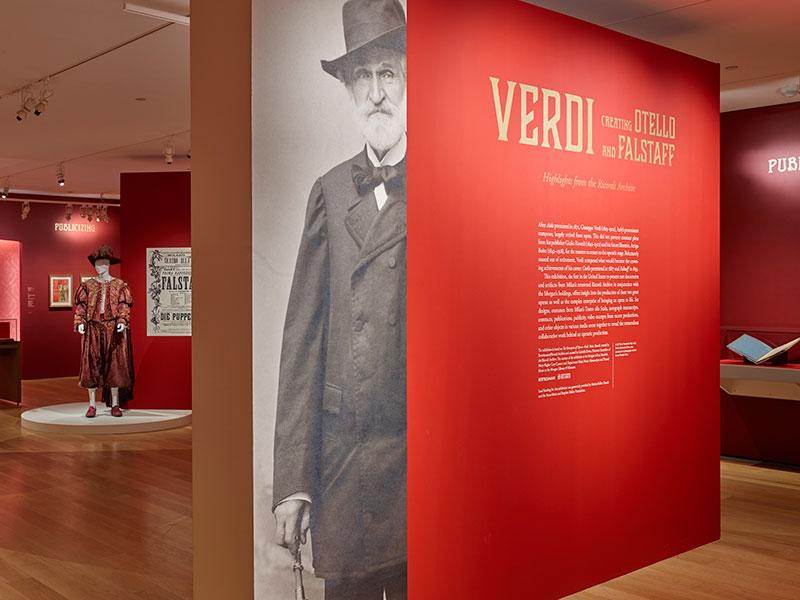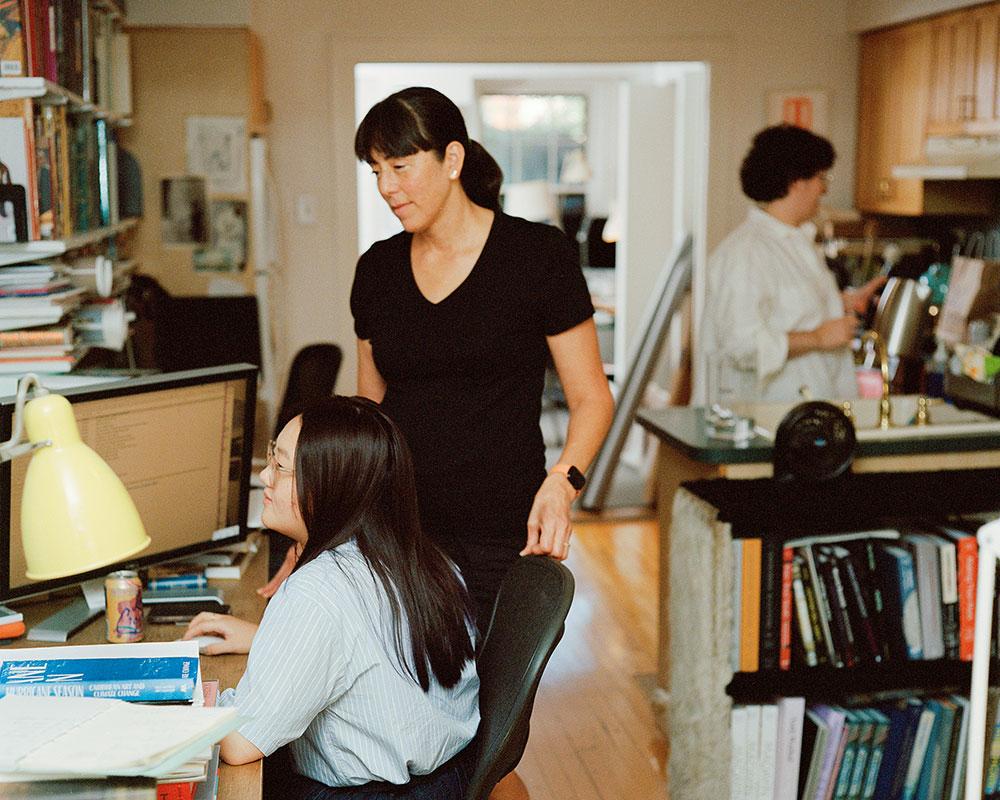Miko McGinty Inc. is a design office based in Brooklyn. Our firm has been working with the Morgan Library & Museum since 2008. We were thrilled to draw on our long-standing collaboration with the Morgan to create a new centennial logo, which celebrates the Morgan’s unique and varied collections. Miko McGinty and Julia Ma led the project, with collaborative feedback from Rita Jules and Rebecca Sylvers.
The identity design process began with a discussion: what does an archetypal centennial logo look like? What can we do with the number “100,” while keeping the logo clean, elegant, and quintessentially Morgan? To stay true to the Morgan’s brand identity, developed by Pentagram in 2006, we started with the Morgan’s house typefaces, Dante and Kievit. Quickly, we knew that we wanted to present an option that wasn’t limited by typeface, but that still fully represented the Morgan.
One of our very first ideas was to draw from Belle da Costa Greene’s papers to find a handwritten “100,” to honor her role as first Director of the Pierpont Morgan Library. We consulted Philip Palmer and Erica Ciallela’s published research on Greene, including the exhibition Belle da Costa Greene and the Women of the Morgan, to find examples of Greene’s handwriting. Julia then prepared a custom drawing based on these references.
Process of finding “100” in Giuseppe Verdi’s Otello, Act 3, Scene 5 (draft) : autograph manuscript, 1887? Play animation
Process of finding “100” in Blaise Cendrars’ La prose du Transsibérien et de la petite Jehanne de France Play animation
Once we conceptualized using 100s from the collection, we knew we could go much further using our office’s accumulated knowledge of the collections. Using the extensive digital collections as a starting point, Julia put together thirteen 100s that represent the Morgan’s collection.
Some of them are inspired by the highlights of J. Pierpont Morgan’s original collection, such as the Gutenberg Bible. Others represent the different branches of the museum that have developed in the last 100 years, as the Morgan expanded as an institution. In some cases, we expanded further than what the digital collections offered. For example, to represent the Ancient Western Asian Seals & Tablets collection, Julia researched the Babylonian numeric system, and put together a custom drawing of 100 in cuneiform. The 100 is built from a 1 (representing 60) and four 10s.
Some are sourced directly from collection items: the 100 from Giuseppe Verdi’s Otello represents the Music Manuscripts & Printed Music collection, and Blaise Cendrars’ La prose du Transsibérien et de la petite Jehanne de France is from the Printed Books collection.
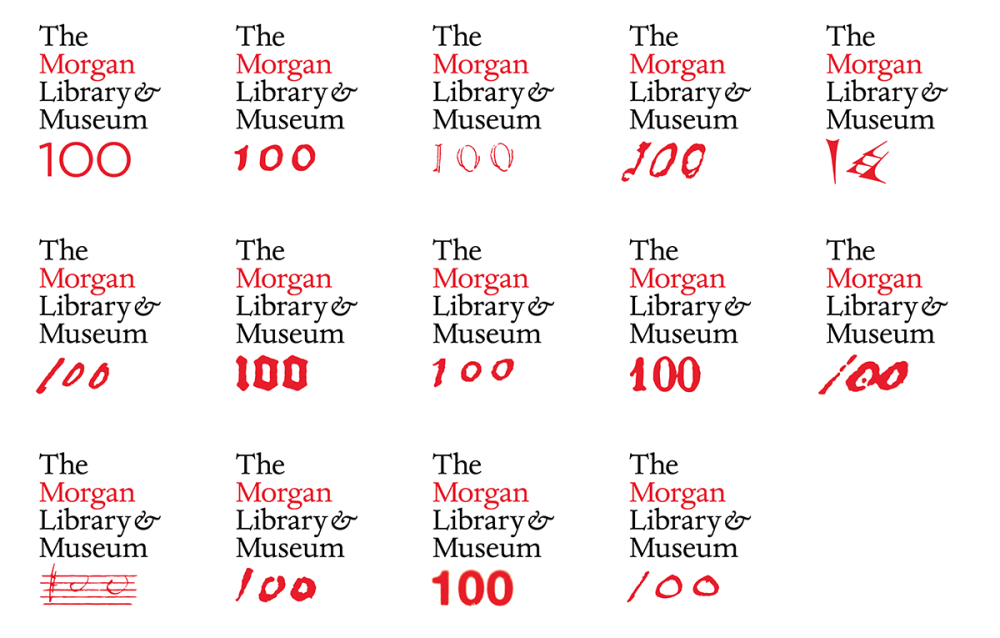
Final centennial identity
Row 1: Main centennial logo with the 100 in Kievit; The Rose Haggadah; Albrecht Dürer’s Adam and Eve; Giovanni Battista Marcola’s drawings; 100 in cuneiform
Row 2: Charlotte Brontë’s The Professor; Gutenberg Bible; John Milton's Paradise Lost; Blaise Cendrars’s La prose du Transsibérien; Jane Austen’s Lady Susan
Row 3: Verdi’s Otello; Parmigianino’s drawings; Kodak film; Oscar Wilde's Picture of Dorian Gray
The varied elements from the collection are grounded by the main centennial logo, which uses Kievit, The Morgan’s sans serif typeface. Together, the final identity visually represents the hundred years of collection and curation that makes the Morgan what it is today.
Over the last fifteen years, we have worked on exhibition identities for over a hundred exhibitions with the Morgan—ranging from She Who Wrote: Enheduanna and Women of Mesopotamia, ca. 3400–2000 B.C. to Verdi: Creating Otello and Falstaff to Blaise Cendrars: Poetry is Everything to It’s Alive! Frankenstein at 200—and countless ephemera pieces. For us, the Morgan’s wide range of exhibitions and curatorial work means that every season presents four completely new design opportunities.
We're honored to have made this logo that not only represents the Morgan's history, but also our history with the Morgan.
Miko McGinty
Principal
Julia Ma
Designer
Miko McGinty Inc.

